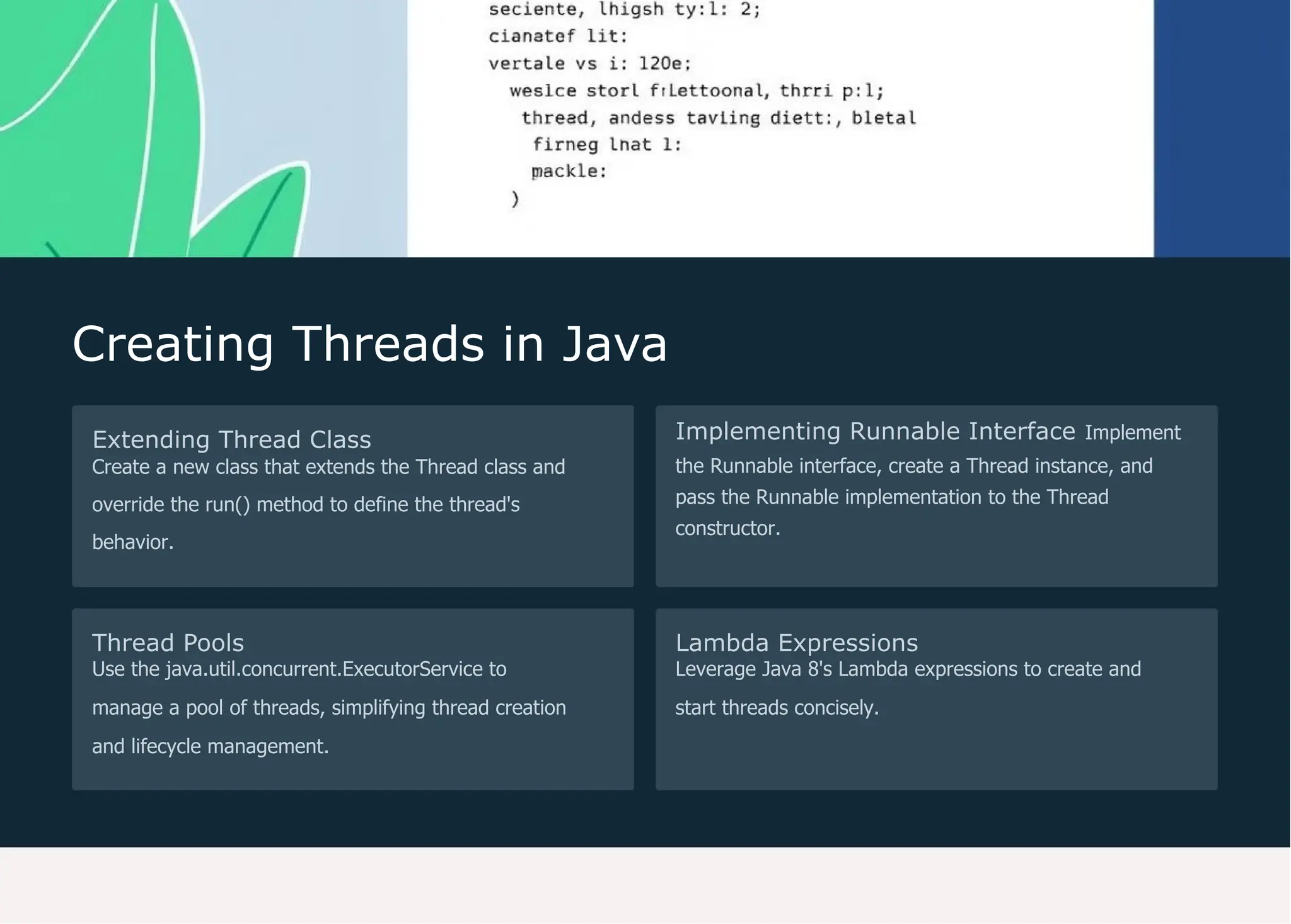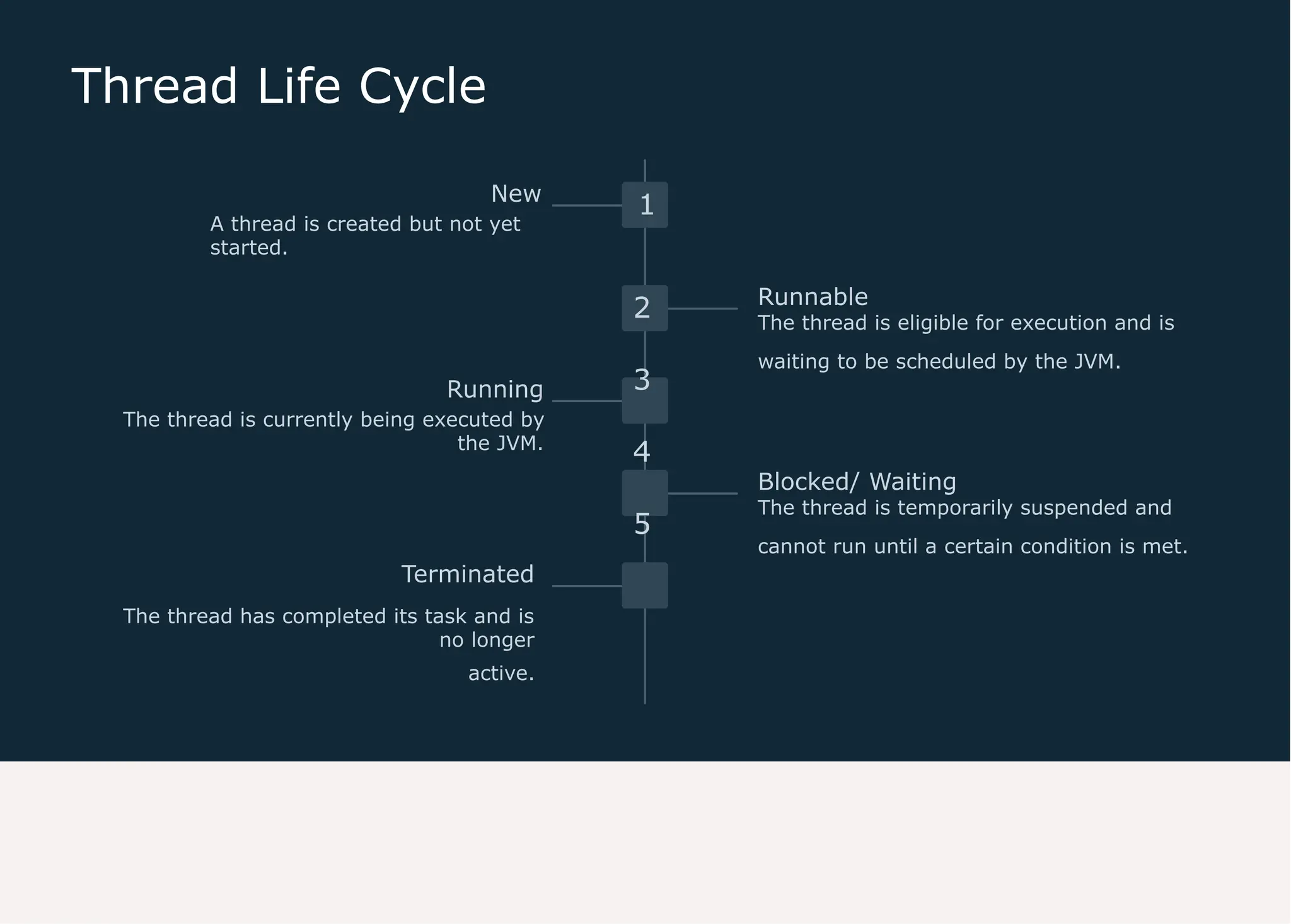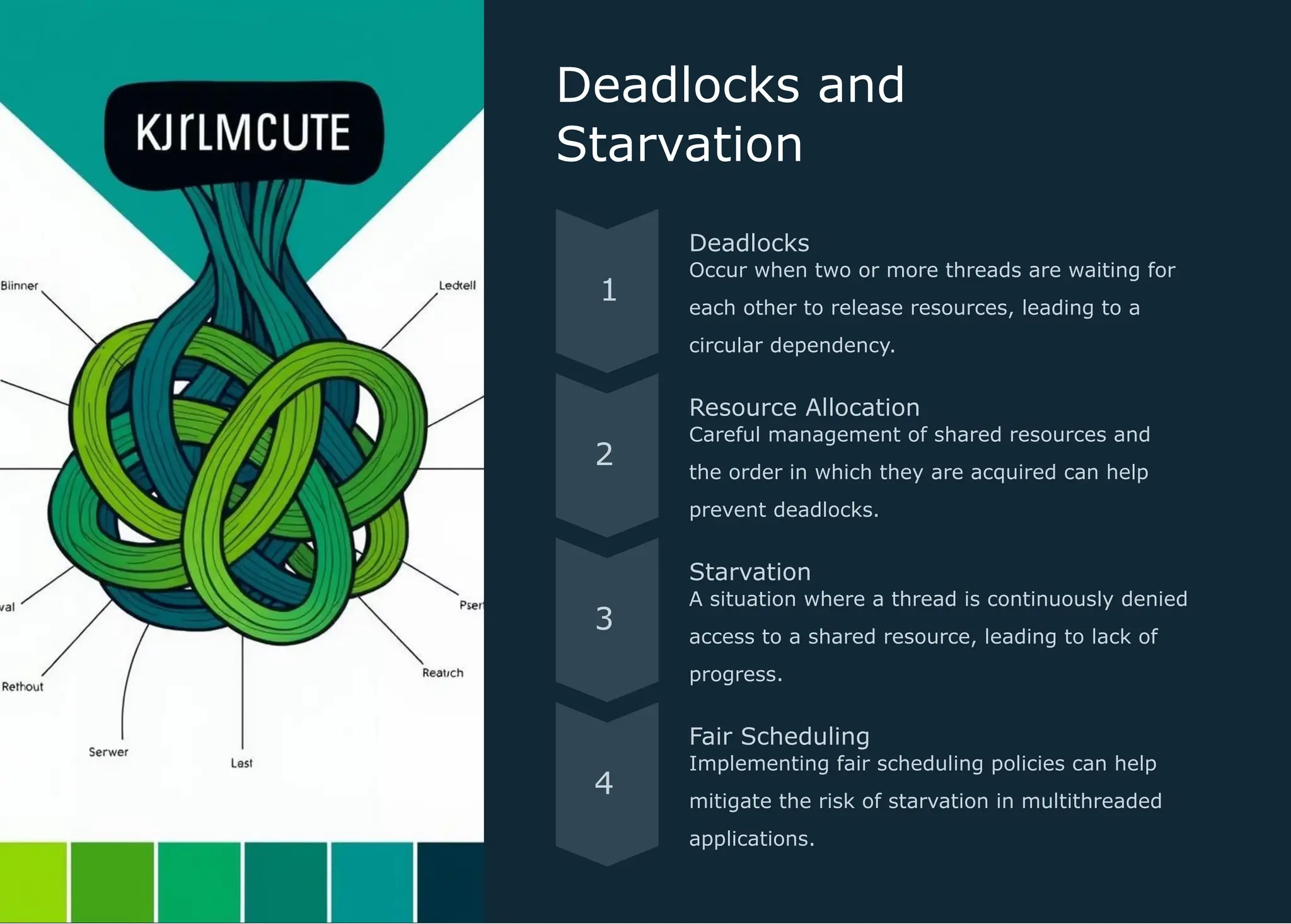The document discusses multithreading in Java, outlining its benefits such as improved efficiency, responsiveness, and scalability. It explains concepts such as thread creation, synchronization, and the thread life cycle, along with best practices for managing threads and preventing issues like deadlocks and starvation. Key strategies include utilizing thread pools, avoiding deadlocks, and minimizing shared resources.









